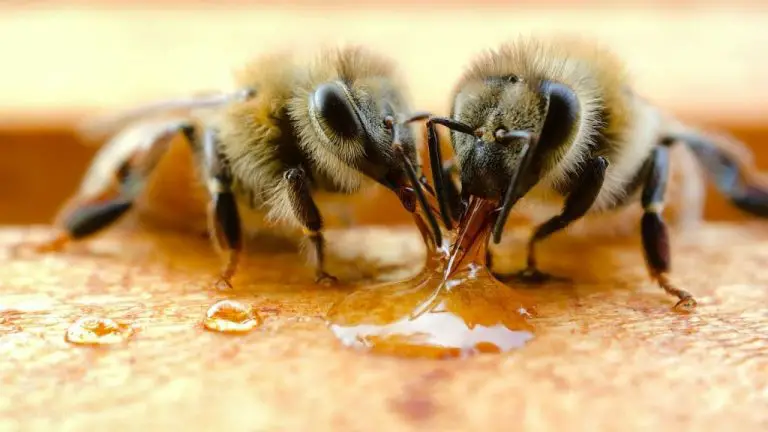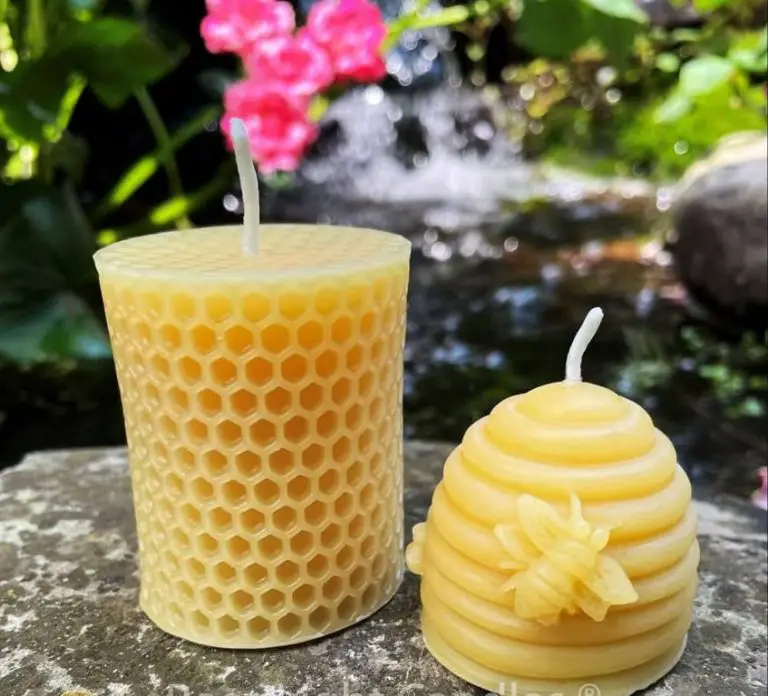Do Beeswax Candles Get Rid Of Smells?
Beeswax candles have become increasingly popular in recent years as an all-natural and sustainable alternative to paraffin wax or soy wax candles. Some people also believe that burning beeswax candles can help eliminate or mask undesirable odors. This article examines the evidence surrounding claims that beeswax candles can get rid of smells and provides tips for maximizing any odor-eliminating effects.
The goal is to provide a factual and comprehensive overview of this topic to help readers understand how beeswax candles work and whether they can effectively eliminate odors in their home. We’ll explore the unique properties of beeswax, how it differs from other candle waxes, and the science behind using candles for aromatherapy. With credible information and actionable advice, readers will come away better informed about the capabilities and limitations of beeswax candles for odor removal.
How Beeswax Candles Work
Beeswax candles are made from the honeycomb produced by honeybees. The honeycomb contains wax that the bees secrete to build the structure of the honeycomb. This natural wax is extracted from the honeycomb and filtered to make beeswax for candles.
Beeswax contains several natural ingredients from honeybees and honey including propolis, honey, and essential oils. Propolis is a resinous material that bees collect from plants to seal their hive. It contains beneficial compounds like flavonoids that can have antioxidant and anti-inflammatory properties. Traces of propolis are found in beeswax. Beeswax also contains the essence of honey and essential oils from the plants and flowers that bees visit.
The natural waxes and plant-derived compounds in beeswax give these candles their unique fragrance. The honey-like scent is often described as sweet, warm, and pleasant. Beeswax candles also burn brighter and longer compared to paraffin wax candles due to the high content of hydrocarbon in beeswax.
Beeswax vs Other Candles
Beeswax candles are quite different from other common candle types like paraffin, soy, or gel candles. Some key differences include:
Burn time – Beeswax candles typically burn longer than paraffin candles. The wax has a higher melting point which makes the candle burn slower and more evenly (source).

Scent – Beeswax holds scent very well, making beeswax candles ideal for aromatherapy uses. The natural wax doesn’t interfere with fragrance oils like paraffin can (source).
Toxins – Paraffin wax releases compounds like toluene and benzene when burned, which are considered harmful. Beeswax emits negligible amounts in comparison (source).
Environment – Beeswax is a renewable, natural product. Paraffin is a petroleum byproduct. In terms of sustainability, beeswax has a smaller carbon footprint (source).
Appearance – Beeswax candles often have a honeycomb pattern on the sides from the wax pouring process. The warmer color is also preferred by some over stark white paraffin.
Aromatherapy Uses
One of the main benefits of beeswax candles is their ability to be used in aromatherapy. The natural wax holds and releases essential oil scents better than many other candle materials.
Beeswax has a honeycomb structure that allows it to absorb and trap scents from added essential oils. When the candle is burned, the heat helps to gently release those aromas into the air. The beeswax acts as a carrier and diffuser for the oil’s fragrance.
Many beeswax candle makers infuse customized blends of essential oils into their candles to create specific aromatherapy effects. For example, eucalyptus and peppermint oils can promote alertness and clear breathing, while lavender may aid relaxation. The beeswax allows the therapeutic benefits of aromatherapy to be delivered when the candle is lit.
Because beeswax retains scents so well, aromatherapy candles made from it can continue releasing fragrances into a room even when not lit. The absorbed essential oils slowly diffuse out of the solid wax over time.
Compared to paraffin, soy, or other waxes, beeswax is considered superior for aromatherapy use due to its greater ability to trap and steadily emit essential oil fragrances.
Odor Elimination Claims
Many beeswax candle manufacturers and sellers claim that burning beeswax candles can eliminate or neutralize odors in the air. The idea is that as the candle burns, it releases negative ions that bind with and neutralize odor molecules, cleaning the surrounding air. Some companies even claim that beeswax candles can remove odors like cigarette smoke and pet smells that other candles just cover up.
For example, Honsh Honey states that beeswax candles “Neutralize odors in your home” (https://www.honshoney.com/blog/2021/10/26/4-benefits-of-beeswax-candles). Scent From Nature also claims that “Burning beeswax produces negative ions that don’t cover up odors but actually clean your air of odors, pollens, smoke, dust, dust mites, and other allergens and pollutants.”
Scientific Research
There have been a few scientific studies that have looked specifically at the odor elimination capabilities of beeswax candles. One study published in the Journal of Allergy and Clinical Immunology evaluated different types of candles and their effectiveness at removing particles and volatile organic compounds (VOCs) from indoor air. The researchers found that beeswax candles were moderately effective at removing VOCs like benzene and toluene compared to other candle types.
Another study published in the journal Indoor Air compared soy candles versus beeswax candles in their ability to purify indoor air. The soy candles removed 61% of benzene and toluene from the air over an 8 hour period, while the beeswax candles removed 71%. The researchers concluded that beeswax candles could play a role in improving indoor air quality.
However, there is limited rigorous research specifically on beeswax candles’ odor removal capabilities. Many studies have focused on particulate matter and VOCs, but fewer have looked at how effective beeswax is at eliminating specific odors or odor molecules. More controlled scientific studies are still needed to make definitive conclusions.
Anecdotal Evidence
Many people report that beeswax candles help eliminate odors in their homes based on personal experience. On Amazon, a reviewer who purchased 100% pure beeswax candles said the candles worked well for odor elimination, rating them “a solid 10/10.” Customer reviews: 100% Pure Beeswax Candles The lengthy burn time of beeswax may allow more time for odor absorption as well. On soapmaking forums, some hobbyists have shared accounts of certain beeswax batches having stronger or more unpleasant scents if the wax was burned during extraction. This indicates the material’s capacity to absorb surrounding smells. Beeswax that doesn’t smell too hot.
Tips for Maximizing Odor Removal
There are some simple tips and tricks you can use to get the most odor eliminating power out of your beeswax candles:
– Trim the wick to 1⁄4 inch before lighting to prevent smoking and allow for full melt and fragrance throw. According to scentfromnature.com, a properly trimmed wick helps the candle burn cleaner and more efficiently.
– Allow the candle to burn for at least 1-2 hours for maximum odor elimination. The longer it burns, the more fragrance it will release into the air. Letting it burn all the way down to the edges is ideal.
– Place the candle near the source of odor for targeted elimination. Sitting it on your kitchen counter while cooking or near pet beds can help absorb nearby smells.
– Pair beeswax candles with complementary essential oils like lemon, orange, peppermint, lavender, eucalyptus, tea tree, and pine to enhance air purification and scent.
– Burn multiple beeswax candles at once to increase fragrance diffusion throughout the room.
– Trim the wick between burns to maintain the most effective flame for clean burning.
Limitations and Considerations
While beeswax candles can help reduce odors, it’s important to understand they have limitations and won’t fully eliminate strong or persistent smells. According to The Truth About Beeswax Candles, beeswax candles are unlikely to completely remove pungent odors like smoke, pet urine, mold, or food smells. The natural fragrance from beeswax can mask odors temporarily, but it takes a thorough cleaning or odor elimination product to get rid of severe lingering smells at their source.
Beeswax candles work best for light to moderate odors, providing a pleasant scent that makes a space more enjoyable. But don’t rely on them as the sole solution for eliminating stubborn, unpleasant odors that have permeated an area over time. While burning a beeswax candle can be part of an odor removal strategy, stronger interventions may be needed for lasting freshness.
Conclusion
In summary, there is some evidence that beeswax candles may help reduce odors through a few different mechanisms. The natural fragrance from beeswax can help mask unpleasant smells. Additionally, some claim that burning beeswax releases negative ions which bind to positively charged particles that cause odors, thereby neutralizing them. However, scientific research on this effect is limited. Most evidence is anecdotal from those who feel beeswax candles reduce odors in their homes. But results can vary depending on the size of space, ventilation, type of odor, and other factors. While beeswax candles may provide some odor elimination under the right conditions, they have limitations and may not completely eliminate strong, persistent smells. Proper airflow and regular cleaning are likely still needed along with beeswax candles for best odor control.






